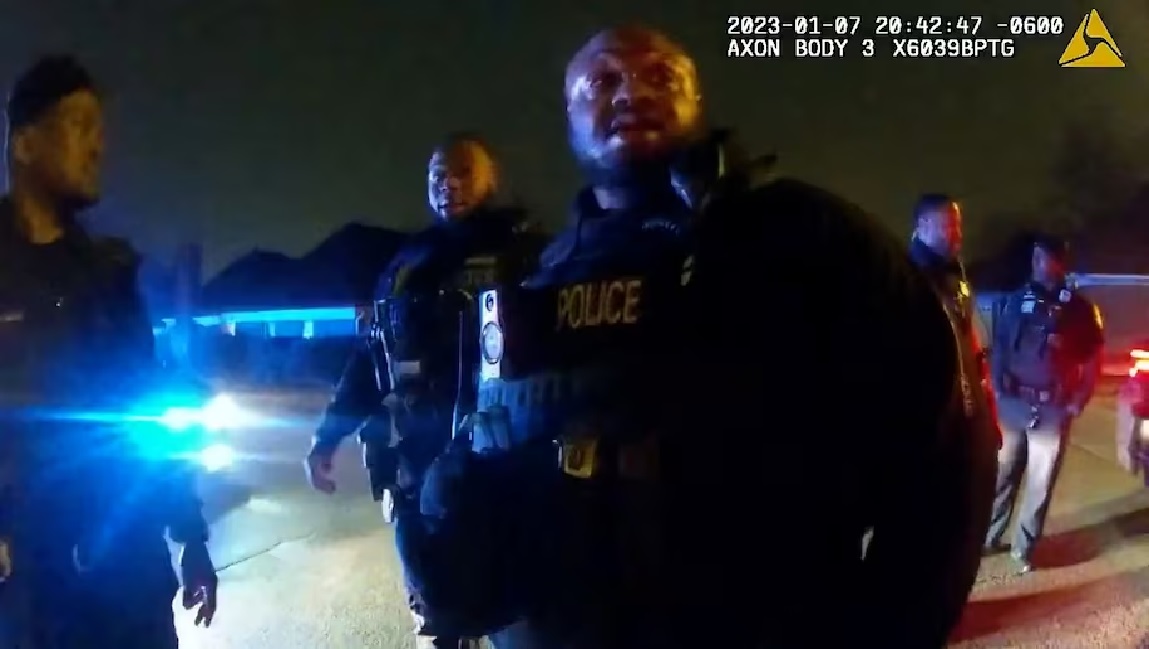News organizations tried to decide Friday night whether to broadcast video that was unquestionably newsworthy but horrifically violent — hardly for the first time.
In this instance, it was graphic footage of five Memphis police officers fatally beating 29-year-old motorist Tyre Nichols. Hours earlier, it was police body-cam video of a man attacking Paul Pelosi with a hammer.
On other days, it has been recordings of mass shootings, war and any other number of atrocities that comprise part of the modern news cycle.
Most networks decided to air the Nichols videos shortly after they were released — some before they had reviewed it themselves — and always with copious on-air and verbal warnings for viewers.
CNN aired the entire four-part video, after anchor Erin Burnett said the network determined that it is “of great public importance.”
“The family and the police chief all want the world to see this video,” she added.
Ahead of a video clip showing paramedics slow to respond, Burnett told viewers, “What you’re about to see is graphic and difficult to watch.”
“Brace yourself and please just be warned that the video is violent, apparently,” said MSNBC host Joy Reid. “I have not seen it yet, either.”
ABC interrupted an episode of “Jeopardy!,” and news anchor David Muir said that the video was so “difficult” that the network would not show much of it, while NBC cut into “Access Hollywood” and news anchor Lester Holt warned that the video was “graphic and disturbing.”
Even Nichols’s mother, RowVaughn Wells, warned the public before the video’s release. “Any of you that have children, please don’t let them see it,” she said during a news briefing.
Social media platforms also enforced their own guidelines as users uploaded the video. Viewers trying to watch an NBC News video of the beating on YouTube were told that “the following content has been identified by the YouTube community as inappropriate or offensive to some audiences.”
Earlier in the day, police body-camera footage of the Oct. 28 attack on the husband of then-House Speaker Nancy Pelosi (D-Calif.) was released on the orders of a San Francisco judge. The video shows the attacker wrestling with Paul Pelosi before striking him with a hammer as officers watched. Pelosi was hospitalized with a fractured skull and injuries to his right arm and hands.
The video was so brutal that a Fox News host apologized to viewers for not properly warning them before showing it. “The producers are apologizing to me, but I want to apologize to you,” Harris Faulkner said Friday afternoon. “We had no idea what that was going to look like, and that should have had a graphic warning before we showed it and then on-screen.”
When Fox re-aired the footage, Faulkner gave a “little lead-up” to the video this time. “This is graphic, and this is jarring,” she said. Over on CNN, anchor Alisyn Camerota warned viewers that the Pelosi video was “disturbing” before it was played.
But news organizations had clearly decided that the risk of upsetting viewers was justified by the news value of the footage.
Some hope that graphic images of the Pelosi attack might help put to rest misinformation that ran rampant online after the assault, rumors that claimed that Pelosi had invited his attacker into his home. In light of those false claims, “there’s every reason to let the public see that it really did happen,” said Bruce Shapiro, executive director of the Dart Center for Journalism and Trauma, who cautioned news organizations to think carefully about how to present graphic content before showing it.
Social media companies appeared to draw a similar conclusion. YouTube spokesman Jack Malon said in a statement that the site was “prominently surfacing videos from authoritative sources in search and recommendations related to Tyre Nichols.” Users searching for Nichols on Saturday morning got a results screen loaded with network, cable and local news videos of the incident, rather than uploads by amateurs. Still, the company restricted those videos to users 18 or older, as did Meta on its Facebook platform.
Over the past few years, news organizations have often wrestled with questions about broadcasting violent videos, weighing their news value against the potential to offend viewers’ sensibilities.
In April 2021, some Chicago-based news organizations decided against airing footage of a police officer shooting and killing 13-year-old Adam Toledo, choosing instead to provide a thorough description and a link to view the video.
News organizations also have debated whether to publish graphic images of the aftermaths of mass shootings and of civilians killed during the war in Ukraine, trying to balance the news value of firsthand imagery with a general desire to spare readers and viewers from depictions of violence and bloodshed.
In July, the Austin American-Statesman published two versions of a surveillance video from the mass shooting at an elementary school in Uvalde, Tex., that left 19 children and two adults dead in May — but decided to mute the sound of children screaming. “We consider this too graphic,” wrote executive editor Manny Garcia. Local television station KVUE also blurred parts of the video “out of sensitivity for the victims and their families.”
Mark Whitaker, who served as the top editor of Newsweek magazine and as an executive for CNN and NBC News, said news organizations “have to be extremely judicious in what you show,” although he acknowledged that the graphic nature of videos is often a big element of a story.
“You want to edit the footage in a way that makes the point but doesn’t belabor the point,” Whitaker said in an interview. “You show just enough to really capture how graphic it is, but no more.”
He said it’s important for all the shows on a television network — which usually make their own editorial judgments — to be on the same page when it comes to airing a graphic video. “This is a situation where you really want to get all your executive producers together and say, ‘Look, this is our approach to this video, and we want everyone to agree on this,’ so every show isn’t going off and using the footage the way that they want.”
Shapiro, of the Dart Center for Journalism and Trauma, said that both the Nichols and Pelosi videos have “pretty compelling arguments for news value and forensic value.” But, he cautioned, “if you’re not judicious in thinking through the ethical challenges every time you air it or every time you place it on a webpage, you run the risk of unwittingly exposing people who are already suffering from various types of trauma in their lives to images that are hard to digest.”
By Naomi Nix














